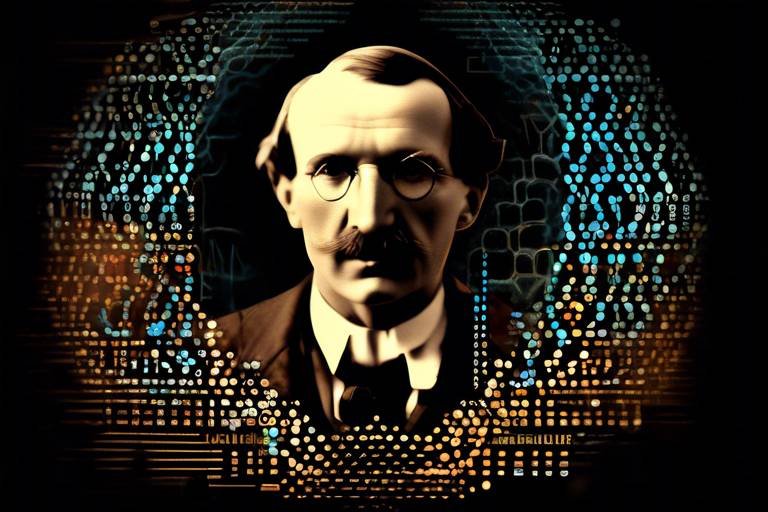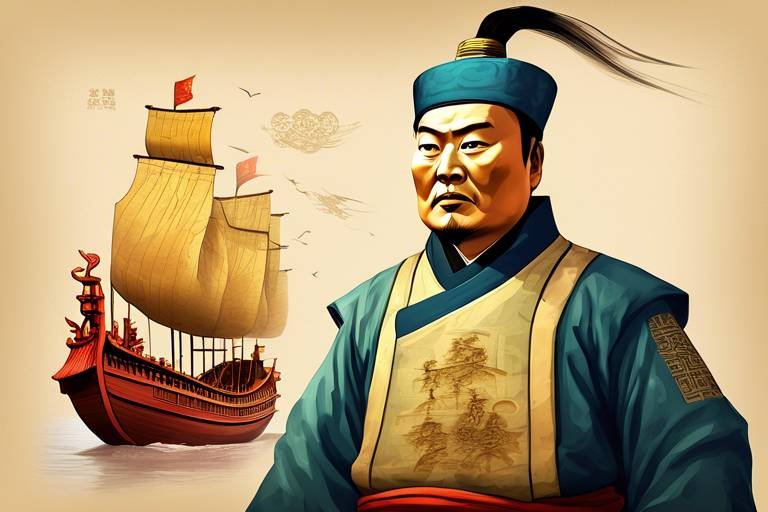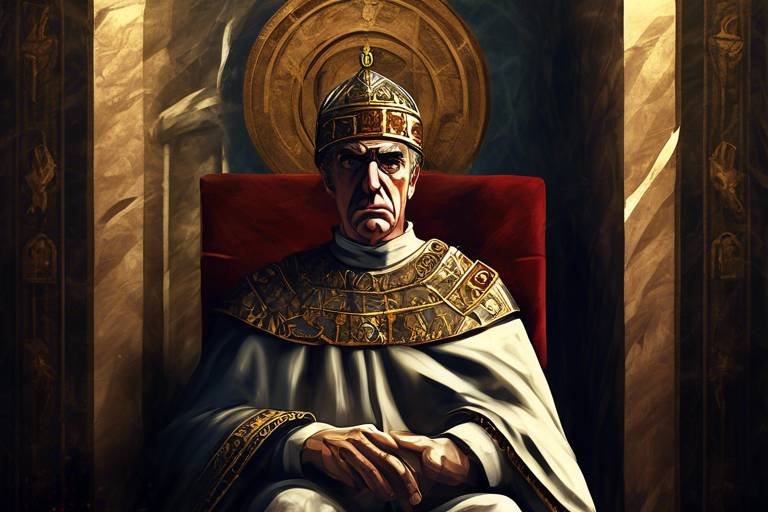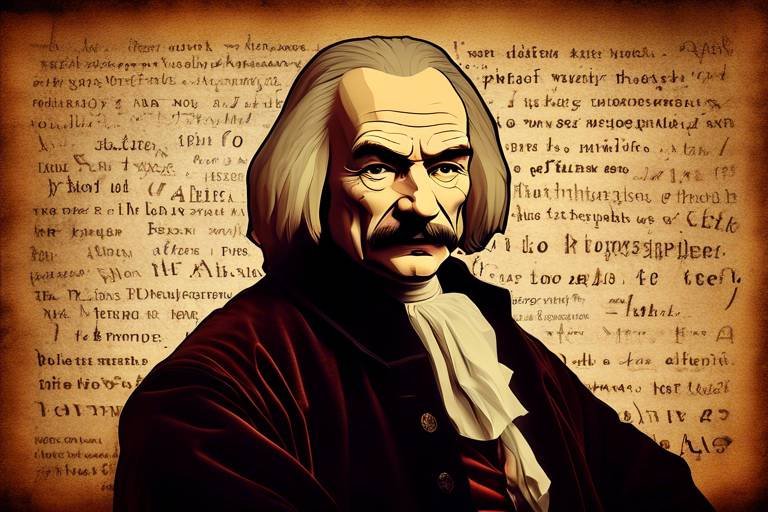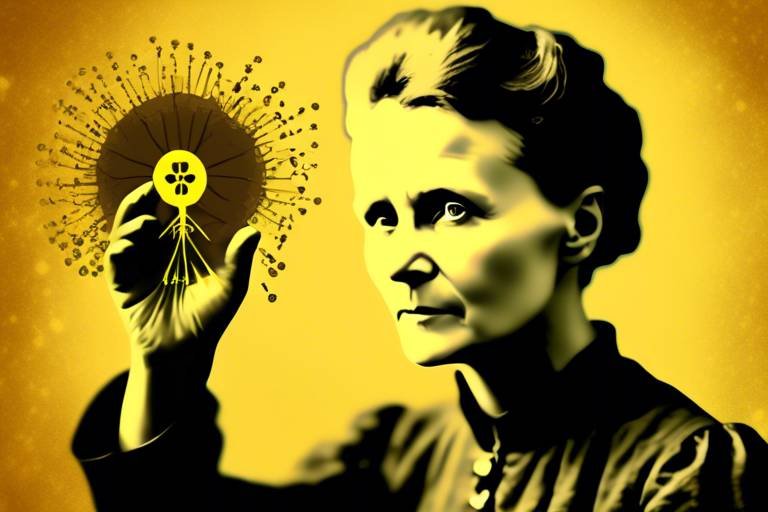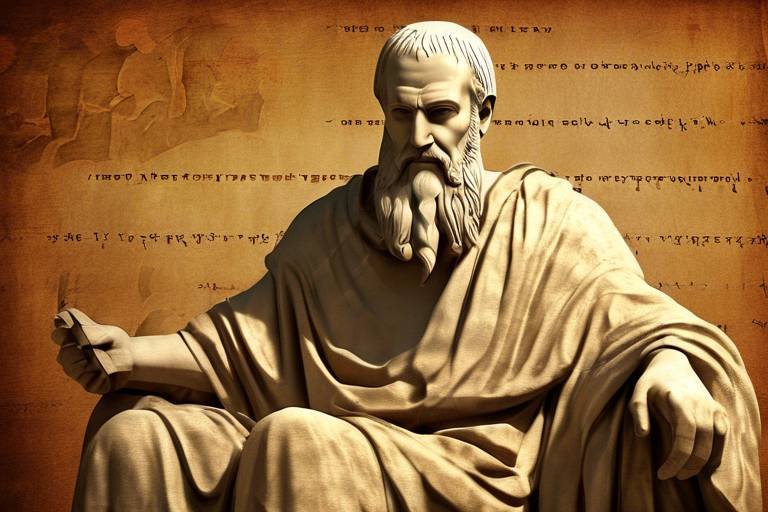Peter the Great: The Tsar Who Modernized Russia
Peter the Great, known as the Tsar who modernized Russia, was a visionary leader who left an indelible mark on the country's history. His reign was characterized by bold reforms and ambitious projects aimed at propelling Russia into the ranks of major European powers. Peter's unwavering determination to Westernize Russia set him apart from his predecessors and laid the foundation for a new era of progress and development.
From a young age, Peter exhibited a keen interest in Western culture and technology, which would later shape his transformative agenda as Tsar. His extensive travels to Europe exposed him to the advancements of the Western world, inspiring him to implement sweeping reforms upon his return to Russia. Peter was not content with the status quo; he sought to propel Russia forward through innovation and modernization.
One of Peter's most significant achievements was the modernization of the Russian military, which he saw as crucial to expanding and safeguarding the country's borders. The Great Northern War against Sweden was a testament to Peter's military prowess and strategic vision, resulting in significant territorial gains for Russia and solidifying its position as a formidable power in Europe.
However, Peter's legacy extends beyond military conquests. His patronage of the arts, architecture, and education ushered in a cultural renaissance in Russia, with St. Petersburg standing as a shining example of his vision for a modern, European-style capital. The architectural projects undertaken under Peter's guidance transformed the Russian landscape and reflected his commitment to progress and innovation.
Despite his achievements, Peter the Great was not without controversy. His authoritarian methods and suppression of dissent have been the subject of criticism and debate among historians. The societal upheavals caused by his reforms also sparked discontent among certain segments of the population, highlighting the complexities of his rule and the challenges of implementing radical change.
Nevertheless, Peter the Great's impact on Russian history is undeniable. His legacy continues to shape the country's trajectory, influencing subsequent rulers and leaving a lasting imprint on Russian society and culture. As we delve into the life and reign of Peter the Great, we are confronted with a complex figure whose legacy remains a topic of fascination and debate among historians and scholars.

Early Life and Ascension to the Throne
Exploring the life and legacy of Peter the Great, one of Russia's most influential rulers who implemented sweeping reforms to modernize the country and transform it into a major European power.
From humble beginnings, Peter the Great was born in 1672 in Moscow, Russia, to Tsar Alexis I and his second wife Natalya Naryshkina. His early years were marked by political turmoil and power struggles within the Russian court. Despite facing challenges, Peter's keen interest in military tactics and maritime affairs shaped his ambitions from a young age.
Upon the death of his half-brother Feodor III in 1682, Peter, along with his elder sister Sophia, was declared joint ruler of Russia. However, it was not until 1689 that Peter officially ascended to the throne as the sole Tsar of Russia, at the age of just 17. This marked the beginning of a transformative era in Russian history.

Westernization and Reforms
Peter the Great's reign was marked by his relentless efforts to Westernize Russia and implement sweeping reforms to propel the country into the modern era. His fascination with Western culture and technology led him to embark on extensive travels to Europe, where he studied the latest advancements in various fields. Upon his return to Russia, Peter was determined to bring about significant changes that would align his country with the progressive nations of Europe.
One of the key aspects of Peter's Westernization drive was the modernization of the Russian military. He reorganized the army and navy along European lines, introducing new tactics, uniforms, and weaponry. This overhaul aimed to strengthen Russia's military capabilities and enhance its standing on the international stage. Additionally, Peter established a navy and sought to create a formidable maritime force to secure Russia's access to the Baltic Sea.
Furthermore, Peter implemented reforms in various sectors of Russian society to drive progress and development. He introduced new administrative structures, revamped the education system, and promoted industrialization to boost the economy. These reforms aimed to modernize Russia's infrastructure, promote trade and commerce, and foster a culture of innovation and entrepreneurship among the population.
To facilitate the transfer of Western knowledge and expertise to Russia, Peter founded the Academy of Sciences and encouraged the recruitment of foreign experts to share their skills with Russian scholars and artisans. This exchange of ideas and technologies played a crucial role in advancing Russia's scientific and technological capabilities, laying the foundation for future innovations and discoveries.
Overall, Peter the Great's Westernization and reforms had a profound impact on Russian society, paving the way for its transformation into a major European power. His visionary approach to modernization and his relentless pursuit of progress left an indelible mark on the country's history and set the stage for its continued evolution on the world stage.

The Great Northern War
The Great Northern War was a significant military conflict that shaped Peter the Great's reign and Russia's position in Europe. This war, fought between 1700 and 1721, primarily against Sweden, aimed to secure Russia's access to the Baltic Sea and establish it as a major maritime power. Peter's ambition to gain control of key territories and ports in the region led to a series of intense battles and strategic maneuvers.
One of the key turning points of the war was the Battle of Poltava in 1709, where Peter's forces decisively defeated the Swedish army, solidifying Russia's dominance in the region. This victory marked a significant shift in the balance of power in Northern Europe and elevated Russia's status on the international stage.
Throughout the conflict, Peter the Great demonstrated his military prowess and strategic acumen, implementing innovative tactics and reforms within the Russian army. His determination to modernize the military, improve logistics, and strengthen naval capabilities played a crucial role in Russia's eventual triumph over Sweden.
Moreover, the Great Northern War had far-reaching consequences for Russia's territorial expansion and diplomatic relations. By securing access to the Baltic Sea and acquiring territories such as Ingria and Livonia, Peter laid the foundation for Russia's future territorial growth and increased its influence in European politics.
Overall, the Great Northern War was a defining chapter in Peter the Great's legacy, showcasing his leadership during times of conflict and his vision for Russia as a formidable European power. The war not only solidified Russia's position in the Baltic region but also highlighted Peter's determination to modernize and strengthen his country through military victories and strategic acquisitions.

Architectural Projects and Cultural Development
Peter the Great's reign was not only marked by military conquests and political reforms but also by significant contributions to the architectural landscape and cultural development of Russia. One of his most notable architectural projects was the construction of the magnificent city of St. Petersburg, which served as a testament to his vision of a modern, European-style capital.
St. Petersburg, often referred to as the "Window to the West," was designed to showcase Russia's connection to the broader European cultural sphere. The city's layout, architecture, and urban planning reflected Peter's desire to create a cosmopolitan center that rivaled the great cities of Western Europe.
Under Peter's patronage, St. Petersburg became a hub of artistic and cultural activity, attracting artists, architects, and intellectuals from across Europe. The city's iconic landmarks, such as the Winter Palace, Peter and Paul Fortress, and the Hermitage Museum, stand as testaments to Peter's commitment to promoting the arts and education.
In addition to St. Petersburg, Peter the Great initiated the construction of numerous other architectural marvels throughout Russia, blending Western architectural styles with traditional Russian elements. These projects not only showcased Peter's grandiose vision but also helped to modernize and beautify the country's urban centers.
Furthermore, Peter's focus on cultural development extended beyond architecture to encompass education, literature, and the sciences. He established the first Russian state-run educational institutions, promoted the translation of foreign literary works into Russian, and supported scientific exploration and innovation.
Overall, Peter the Great's architectural projects and cultural initiatives played a crucial role in shaping Russia's identity as a European power and left a lasting legacy that continues to influence the country's cultural landscape to this day.

St. Petersburg: The Window to the West
St. Petersburg, often referred to as the "Window to the West," stands as a testament to Peter the Great's grand vision for a modern and European-style capital for Russia. This magnificent city, founded by Peter in 1703, served as a symbolic gateway connecting Russia to the cultural and political influences of Western Europe. Designed by prominent architects, St. Petersburg's stunning architecture reflects the blend of Western and Russian styles, showcasing Peter's desire to showcase Russia as a major player on the European stage.
One of the most iconic landmarks in St. Petersburg is the majestic Winter Palace, which later became the official residence of the Russian monarchs. The city's network of canals and bridges, reminiscent of Venice, adds to its charm and allure, earning it the nickname "Venice of the North." St. Petersburg's cultural significance is undeniable, with world-renowned museums such as the Hermitage housing priceless art collections that rival those of any European capital.
Furthermore, St. Petersburg played a pivotal role in Russia's diplomatic relations with Western powers, serving as a hub for international trade and cultural exchange. The city's strategic location on the Baltic Sea facilitated closer ties with Europe, enabling Russia to engage more actively in global affairs. St. Petersburg's emergence as a cosmopolitan center of art, literature, and innovation under Peter's patronage solidified its reputation as a beacon of Western influence in the heart of Russia.

Legacy and Impact on Russian History
Peter the Great's legacy and impact on Russian history are profound and far-reaching. His reign marked a significant turning point for the country, ushering in a new era of modernization and Europeanization that would shape Russia's trajectory for centuries to come. One of the most enduring aspects of Peter's legacy is his transformation of Russia into a major European power, both politically and culturally.
Through his ambitious reforms and visionary leadership, Peter laid the foundation for Russia's future growth and development on the world stage. His efforts to modernize the military, revamp the administrative system, and promote education and innovation set the stage for Russia's emergence as a formidable player in international affairs.
Furthermore, Peter's establishment of St. Petersburg as the new capital symbolized his commitment to Western ideals and his desire to position Russia as a key player in European politics and culture. The city's architectural beauty and strategic location on the Baltic Sea served as a testament to Peter's vision for a modern, progressive Russia that was open to the influences of the West.
Moreover, Peter's impact on Russian society extended beyond his reign, influencing subsequent rulers and shaping the course of Russian history. His reforms laid the groundwork for the country's industrialization and modernization in the centuries that followed, leaving a lasting imprint on the nation's development.
Despite facing criticism and controversy during his rule, Peter the Great's legacy remains a subject of fascination and debate among historians and scholars. His complex personality, authoritarian methods, and ambitious reforms continue to spark discussions about his place in Russian history and the enduring impact of his reign.

Controversies and Criticisms
When delving into the legacy of Peter the Great, it is impossible to ignore the controversies and criticisms that have surrounded his rule. One of the most significant points of contention is Peter's authoritarian methods of governance. His strong-handed approach to ruling Russia, characterized by centralized power and suppression of dissent, has been a subject of debate among historians and scholars.
Furthermore, Peter's sweeping reforms and Westernization efforts were met with resistance from traditionalists and conservatives within Russian society. The rapid pace of change and the imposition of Western customs and practices led to societal upheavals and tensions, with many questioning the extent to which these reforms truly benefited the Russian people.
Another aspect that has come under scrutiny is the human cost of Peter's ambitious projects and military campaigns. The Great Northern War, in particular, resulted in significant loss of life and resources, raising questions about the ethical implications of Peter's expansionist policies and the toll they took on the Russian population.
Moreover, Peter's personal life and relationships have also been a source of controversy. His tumultuous marriage to Catherine I, his treatment of his son and heir Alexei, and his complex dynamics with the nobility have all been subjects of criticism and speculation, adding layers of intrigue to his reign.
In examining the controversies and criticisms surrounding Peter the Great, it becomes evident that his legacy is a complex and multifaceted one. While he is celebrated for his modernizing efforts and transformation of Russia into a major European power, his methods and decisions have also sparked debate and divided opinions among historians and observers of Russian history.

Historiographical Perspectives
Historiographical Perspectives offer a fascinating insight into the varying interpretations of Peter the Great's reign throughout history. Historians have approached the study of Peter's legacy from diverse angles, leading to a rich tapestry of perspectives on his rule. Some scholars view Peter as a visionary leader who dragged Russia into the modern era through his bold reforms and Westernization efforts. They highlight his role in transforming Russia into a major European power and laud his contributions to the country's cultural and intellectual development.
On the other hand, critics of Peter the Great point to his autocratic tendencies and harsh methods of governance. They argue that his reforms came at a significant cost to Russian society, leading to social upheaval and widespread discontent. These historians emphasize the darker aspects of Peter's rule, such as the suppression of dissent and the imposition of Western customs on a reluctant population.
Furthermore, historiographical debates surrounding Peter the Great often revolve around the long-term impact of his policies. Some argue that Peter's reforms laid the foundation for Russia's future growth and modernization, setting the stage for the country's emergence as a global power. Others contend that the rapid changes implemented by Peter had negative repercussions, creating deep-seated problems that would plague Russia for generations to come.
Frequently Asked Questions
- What were Peter the Great's major accomplishments?
Peter the Great is known for modernizing Russia and transforming it into a major European power. His major accomplishments include Westernizing Russia, expanding its territories through military campaigns, founding St. Petersburg, and fostering cultural development.
- How did Peter the Great Westernize Russia?
Peter the Great Westernized Russia by implementing reforms in various sectors such as the military, government, education, and culture. He also sent Russians to study in Western Europe, introduced Western technologies and customs, and founded St. Petersburg as a European-style capital.
- What was the significance of the Great Northern War?
The Great Northern War was a major conflict led by Peter the Great against Sweden to gain access to the Baltic Sea and expand Russian territories. The war resulted in Russia becoming a major power in Europe and establishing its presence in the Baltic region.
- How did Peter the Great contribute to Russian culture?
Peter the Great patronized the arts, architecture, and education, bringing Western influences to Russia. He founded the Academy of Sciences, promoted secular education, and encouraged the development of Russian literature and arts, leaving a lasting impact on Russian culture.
- What controversies surround Peter the Great's rule?
Peter the Great's rule was controversial due to his authoritarian methods, suppression of dissent, and the societal upheavals caused by his reforms. Critics argue that his reforms were too harsh and imposed Westernization on Russia at the expense of its traditional values.




